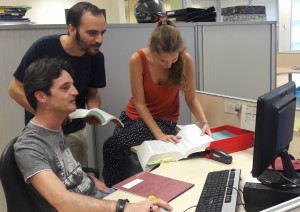
The Latin expression “Primum non nocere” attributed to Hippocrates roughly translates as “first, do no harm”. The aim of the expression is to remind physicians to consider the damage that their practice might entail. In industrialized countries, drug consummption has experienced a significant increase in the lasts decades resulting in greater exposure of patients to these and their possible side effects. In this context, the development of tools to improve patient safety is of particular importance.
The rational use of medicine aims to obtain the greatest possible therapeutic benefit with the maximum efficiency, preventing the appearance of risks that drug treatment might cause. This rational use is intended to reduce drug-related problems (DRPs). For example, if a patient is taking two blood-thinning drugs simultaneously, this may produce haemorrhaging, which in turn can have serious consequences. Correct prescription is one of the best ways to prevent DRPs. Some of the most common DRPs associated with prescription include therapeutic duplications, administration of a higher dosage than the maximum recommended, or inadequate dosing schedule or prescription duration, drug interactions, administration of teratogenic drugs to pregnant women and drugs which are not recommended in geriatric patients.
Thus, the increased consumption of drugs offers us new challenges as well as new opportunities.
In the field of clinical safety in electronic prescription, the Program for Innovation and Support in the field of Medication (PISAM, as per the Catalan acronym), part of the Agency for Health Quality and Assessment of Catalonia (AQuAS) works together with Pharmaceutical and Medication Management division of the Catalan Health Service in developing clinical content for an integrated model in the Integrated Electronic Prescription System (SIRE, as per the Catalan acronym) to improve the safety of pharmaceutical services for each patient according to their characteristics and the concomitant medication prescribed.
Currently this system integrates five security dimensions:
- Pharmaceutical interactions. These may occur when two drugs administered at the same time cause or have the potential to cause an undesirable effect and as such, should not be administered together.
- Therapeutic duplication. This refers to the simultaneous prescription of two or more drugs with the same active substance or the same pharmacological action.
- Drugs not advisable for use among geriatric patients. Drugs in which the risk-benefit ratio is not favourable in geriatric patients.
- Teratogenic drugs. Drugs with proven negative side effects on the embryo or foetus in women of childbearing age.
- Maximum dosage. Prescribing a higher dosage of a drug than can be tolerated without causing toxic side effects.
This system is being implemented gradually, firstly taking into consideration the drugs dispensed in community pharmacy, whether or not these are financed by CatSalut. Currently, the system is beginning to include drugs dispensed by hospital pharmacy services to outpatients, which will enable us to obtain a more comprehensive patient medication plan.
The data is updated with the commercialization of new drugs and the incorporation of the new evidence available. In addition, there are regular operations carried out on the data used in order to identify which alerts are systematically rejected by doctors and to review whether there is any clinical justification for the withdrawal or modification of these alerts.
In the future, plans are underway to provide SIRE with a system to facilitate the conciliation and systematic review of medication.
You can find more details about this project in the following document: Clinical safety of electronic prescription. Methodology for preparing clinical safety content.
Post written by Jose Expósito, Diego Mena and Andrea Molina.
